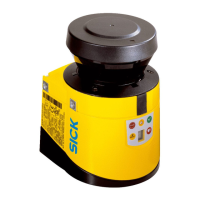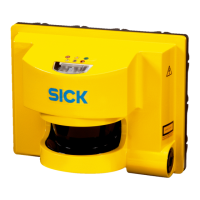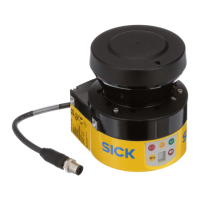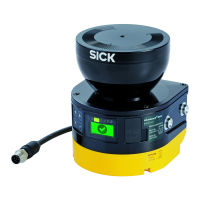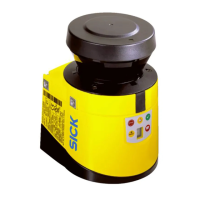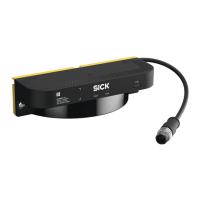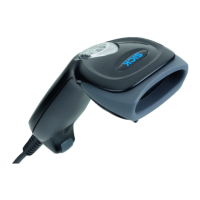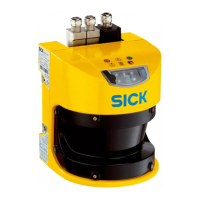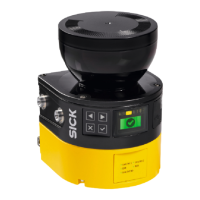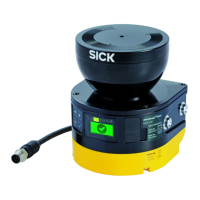°
t
I
= pr
ocessing time for the selected switching type in milliseconds (ms)
•
Switching signal via network: t
I
= 28ms
2. Calculate how much time is available in the response time for switching between
monitoring cases:
t
C
SA
= (n – n
CS
) × t
S
where:
°
t
C
SA
= time available for switching between monitoring cases in milliseconds
(ms)
°
n = Multiple sampling setting (default: n = 2)
°
n
CS
= multiple sampling after switching between monitoring cases (with set‐
ting Fast (presetting): n
CS
= 1, with setting Reliable: n
CS
= n – 1, with setting
User-defined: n
CS
≤ n – 1)
°
t
S
=scan cycle time in milliseconds (ms)
3. Compare whether there is enough time available for switching between monitoring
cases:
°
If t
CSA
≥ t
CSR
: earlier start is not necessary.
°
If t
CSA
< t
CSR
: switching between monitoring cases must start earlier. Required
time advance t
CSP
: t
CSP
= t
CSR
– t
CSA
Complementary information
•
In some c
ases, it is not possible to define when to switch (for example because
processing times of the machine vary) or the time advance means that the moni‐
toring of an area finishes too early.
Remedial measures:
°
Allow both protective fields to partially overlap.
°
Temporarily monitor both hazardous areas simultaneously.
Further topics
•
"In
put delay", page 82
4.3.5 Minimum distance for stationary applications
Overview
T
he protective field must be designed to recognize a person, at the latest, when he or
she reaches the minimum distance from the hazardous point The minimum distance
means that the dangerous state can be ended in good time before the person reaches
the hazardous point.
Minimum distance for stationary applications
T
he calculation of the minimum distance is based on international or national stand‐
ards and statutory requirements applicable at the place of installation of the machine.
If the minimum distance is calculated according to ISO 13855, then it depends on the
following points:
•
Machine stopping time (time interval between triggering the sensor function and
the end of the machine’s dangerous state, if necessary including signal propaga‐
tion times in the network and processing time in the control)
•
Response time of the protective device
•
Reach or approach speed of the person
•
Resolution (detection capability) of the safety laser scanner
•
Type of approach: parallel for hazardous area protection, orthogonal for hazardous
area protection and access protection
•
Switching time between monitoring cases
•
Parameters specified based on the application
PROJECT PLANNING 4
8027909/2023-02-22 | SICK O P E R A T I N G I N S T R U C T I O N S | nanoScan3 – EtherNet/IP™
25
Subject to change without notice
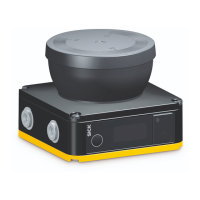
